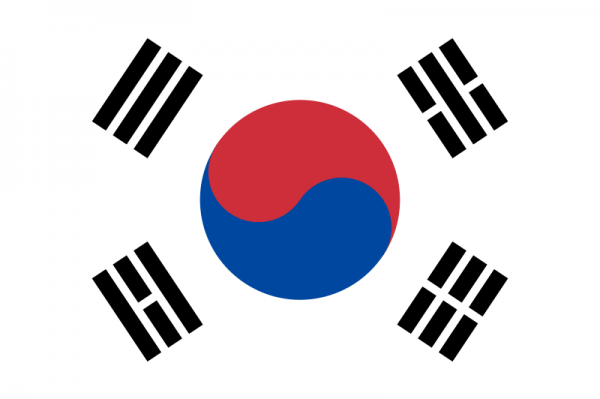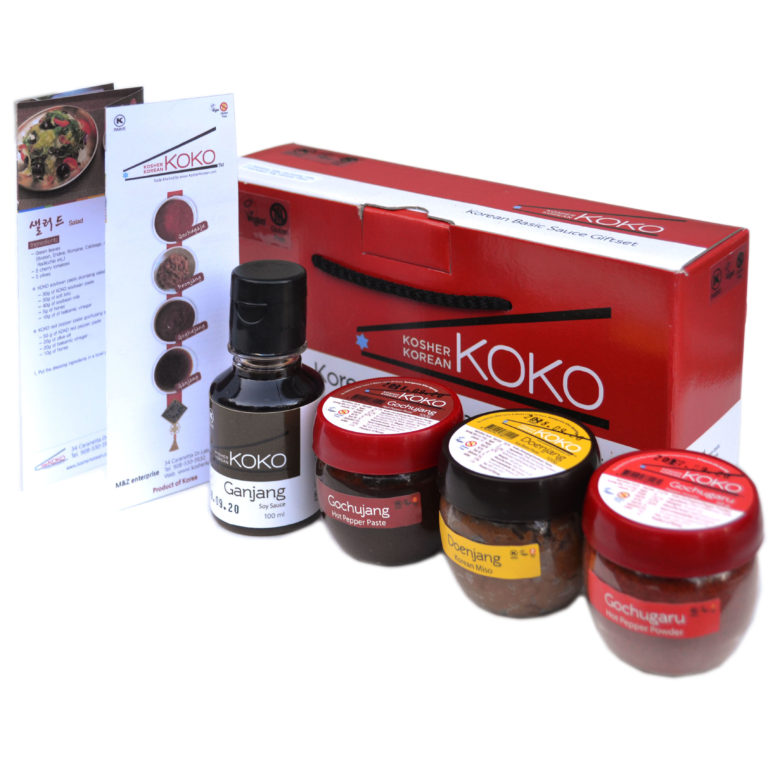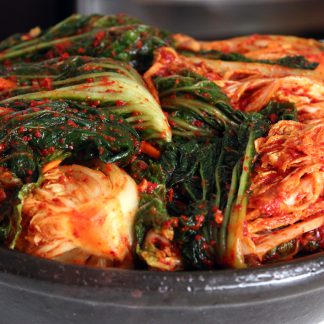Kosherfest 2021: Will Korean Cuisine be the Next Big Thing?
After a COVID-induced hiatus, Kosherfest returned to the New Jersey Meadowlands Conference Center this year with a variety of new products. While smaller than previous years, there was an energy and excitement as vendors and buyers were anxious to meet each other in person, sample wares, and talk food. Since Mipikale focuses on vegan foods, we won’t cover the interesting cheeses and meat products (of which there were several), but here is the first of a series of five articles reviewing some of the more interesting plant-based items that may find a way to your table, restaurant, or catering hall.
Chinese, Japanese, Vietnamese, and now…Korean
Kosher Chinese (Not Just on Christmas)
Kosher consumers are increasingly looking to world cuisine, particularly from Asia. Of course, kosher Chinese has been around for a long time. In New York City, the two most famous kosher Chinese restaurants were Bernstein’s on Essex (aka Schmulka Bernstein’s) on the Lower East Side and Moshe Peking in midtown.[1] They served an Americanized Cantonese cuisine, that if not authentic to what is eaten in China, was certainly comparable to non-kosher Cantonese restaurants that flourished in the mid to late 20th century American cities (though not in price—a $3.50 egg roll would be about $12 in today’s dollars and main dishes were typically around $20 which would be well over $50 in 2021).
In the 1970s and 80s things began to change as restaurants owned by immigrants from other regions of China began to introduce other local cuisines, particularly the spicier Szechuan-style of cooking, in restaurants such as the Empire Szechuan chain in Manhattan. Inevitably, kosher restauranteurs followed. In the late 1980s and early 1990s, a number of Chinese restaurants with more diverse (and slightly less expensive[2]) menus opened. Offering both delivery and elegant dining-in, they whetted the palate for more diverse offerings.
Sushi: The New Lox
Japanese cuisine was fast behind, again following the rapid growth in non-kosher restaurants featuring sushi in the 1980s. While there was a small Japanese hibachi-style restaurant and music club in Soho in the mid-1980s called Shalom Japan (no relation to the present-day non-kosher Brooklyn restaurant of the same name), the breakthrough came with Haikara Grill, a Japanese steakhouse and sushi bar, located in east midtown in the mid-1990s. However, sushi was already turning up on the menu at many other places, mainly kosher Chinese restaurants. Of course, sushi is now ubiquitous at Chinese restaurants, steakhouses, kosher pizza parlors, and nearly every wedding and other catered event. There are also many sushi-centric restaurants in many cities, including in Israel.
While some kosher restaurants offer a more pan-Asian menu, such as Estihana in New Jersey and Brooklyn, there have not been many other authentic restaurants focusing primarily on foods from other Asian countries, other than a few small places offering food of Vietnam.[3] Even getting authentic ingredients to make such cuisines at home has been a challenge. But that may be about to change.

Here Comes Korean Cuisine

It was delightful to meet Bongja Ziporah Rothkopf at Kosherfest. Ziporah owns Seoul House, a kosher Korean restaurant in Israel, and is bringing authentic Korean foods to the US market under the KOKO Kosher Korean brand.
Several sauces are available. Gochujang is fermented hot pepper paste, made from red chilis, rice syrup, fermented soybeans, and salt. I got to taste this at her booth and it was spicy but not overpowering, with a touch of sweetness. Use it on salads or seitan, and vegetables. Doenjang is a fermented soybean paste used in many Korean soups and bears similarities to the Japanese condiment miso. It can be substituted for salt in dishes, while also adding umami flavors. One of the most popular dishes made with it is doenjang jiggae—fermented soybean paste stew. Soy sauce is a critical ingredient in cuisines from throughout the Asian continent and each country has a variety of types of soy sauce, each with a unique flavor profile. Ganjang is traditional fermented Korean soy sauce, protein rich and salty. Used in Korean soups, sauces, and dressings for vegetables and proteins, it is slow brewed, very concentrated, and gluten free (many soy sauces contain wheat and are watered down).
In addition to the prepared products, KOKO Kosher Korean is also marketing key ingredients to making authentic Korean cuisine, for those who want to experiment on their own. Gochugaru is the ingredient behind much of Korean food’s spiciness. The chili powder can be mixed with meju powder in order to create gochujang, or can be used in recipes. Gochugaru is also important in the creation of kimchi. It is available both hot and mild, and in fine and course grinds. Meju Garu is dried fermented soybean powder. While not consumed on its own, it serves as the basis of several Korean condiments, such as doenjang, ganjang, and gochujang. Meju Garu powder is also probiotic and can be added to miso soup, stew, yogurt, milk, rice, salad, pasta, or toast and butter.
KOKO Kosher Korean products are available in both consumer and institutional/food service sizes and all of their products are certified kosher by the OK. Purchase at your retailer or online. Perhaps we will see an entrepreneur open a kosher Korean restaurant soon!

Also at the KOKO booth was Kimchi, a traditional side dish of salted and fermented vegetables. Kimchi is a staple food in Korean cuisine, and is only rarely found as a kosher prepared product. Typically made from napa cabbage and Korean radish, it is seasoned with chili powder (gochugaru), scallions, garlic, and ginger (some recipes call for seafood). It is eaten as a side dish with almost every Korean meal and added to soups and stews. Traditionally, kimchi was stored underground earthenware fermentation vessels to prevent freezing during the winter and to keep it cool during the summer. Kimchi has strong, spicy, flavors and odors, although mild varieties exist. For those not used to strong fermented products the smell can be off-putting at first (it is an acquired taste and is not your typical German sauerkraut). However, for those seeking an authentic Korean cuisine, it is essential. Jongga is the number one kimchi brand worldwide and is gluten free, low-fat, and high-fiber. Serve it with rice, noodles or soups. I tried it at the show and it was absolutely delicious. Certified kosher by the OU and available from KOKO Korean Kosher and Amazon. You may also find it at some H Mart retailers.

Another new entry is Kosher Korean BBQ Sauce, from Nongshim, a major food company in South Korea. Though not yet available, it will be a sweet and savory barbeque sauce and while marketed to make bulgogi and galbi, traditionally grilled or stir fried meats, it can certainly be used to enhance seitan, tofu, or other vegan meat alternatives and lend a Korean barbeque taste to these vegan meat alternatives. The product is going into production and is expected to be approved by the OU.
Next: Tortillas, Gluten Free Baking Mixes and Pretzel Challahs
Sources and Notes
Sources: Wikipedia, KOKO Kosher Korean, Daesang USA
[1] There are reports of earlier kosher restaurants serving Chinese food in New York and Los Angeles as early as the turn of the 2oth century
[2] They were still about twice as expensive as non-kosher equivalents, as is typical due to the higher cost of meat, and the added cost of supervision and closing for the Sabbath and holidays when many non-kosher restaurants are busiest
[3] I recall dining in a kosher Vietnamese restaurant in Nice, France in the late 1980s. In Israel, one can dine at Ca Phe Hanoi. PHO-MEN on Troy, a Vietnamese-inspired noodle house opened in Brooklyn in 2018 but closed less than two years later. Fresh Mint is a vegan restaurant in Scottsdale, AZ that may be the only kosher Vietnamese restaurant in the US at the present time.




